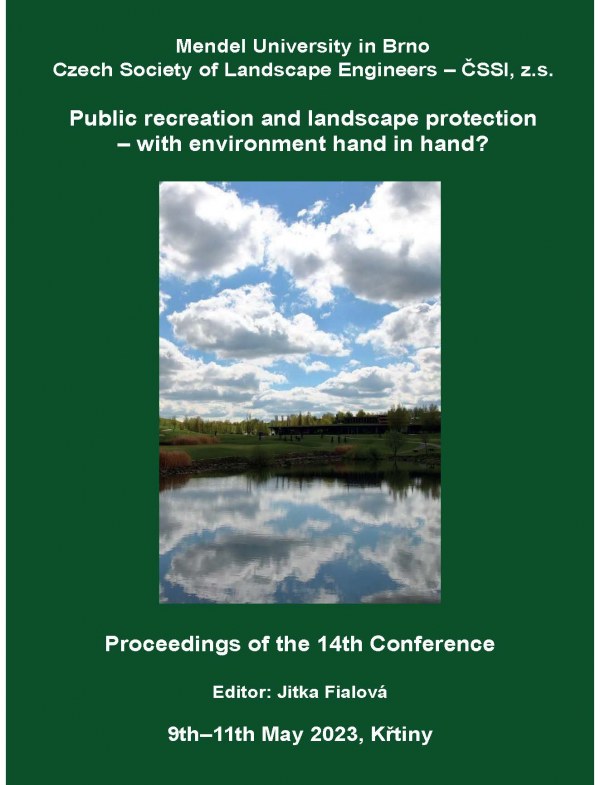
DOI: 10.11118/978-80-7509-904-4-0346
TRADITIONAL COPPICE MANAGEMENTS AT THE LANDSCAPE LEVEL ALONG WITH RECREATIONAL USE
- Barbora Uherková, Jan Kadavý, Zdeněk Adamec, Michal Friedl, Aleš Kučera, Robert Knott, Michal Kneifl, Jakub Drimaj
Daný příspěvek vznikl v rámci probíhajícího projektu na ŠLP ML Křtiny, kde se zkoumá vliv řízené pastvy a hrabání opadu na stav pařezin. Dílčím cílem je separace těchto vlivů a kvantifikace jejich účinku na stav pařezin. Přičemž pařezina (les nízký) může být vnímána jako jeden z tvarů lesa se specifickým managementem, který vede k diverzifikaci způsobů hospodaření v čase a prostoru, a to na úrovni celé krajiny. Projektem sledované faktory (pastva a hrabání opadu a jejich vzájemné ovlivnění) v minulosti přispěly k negativnímu povědomí o pařezinách u odborné, ale i laické veřejnosti. V současné době se snažíme o nový náhled na tyto tradiční způsoby hospodaření.
Klíčová slova: standards, grazing, litter raking, biodiversity, recreational value
stránky: 346-350, Publikováno: 2023, online: 2023
Reference
- Adamec, Z., Friedl, M., Kadavý, J., Kneifl, M., Knott, R., Kománek, M., Kostka, M., Kučera, A., Neubauer, Š., Uherková, B., Vichta, T. (2022). The influence of historical and modern forest managements on the condition of coppice - results in 2022. In: SilvaNet - WoodNet 2022: Proceedings Abstracts of Student Scientific Conference. Brno: Mendelova univerzita v Brně, 12-13.
- Cotillas, M., Sabaté, S., Gracia, C., Espelta, J. M. (2009). Growth response of mixed mediterranean oak coppices to rainfall reduction: Could selective thinning have any influence on it? For. Eco. Manag., 258, 1677-1683.
 Přejít k původnímu zdroji...
Přejít k původnímu zdroji... - Duflot, R., Fahrig, L., Mönkkönen, M. (2022). Management diversity begets biodiversity in production forest landscapes. Biol. Conserv., 268, 109514.
 Přejít k původnímu zdroji...
Přejít k původnímu zdroji... - Jones, T. A., Thomas, S. C. (2004). The time course of diameter increment responses to selection harvests in Acer saccharum. Can. J. For. Res., 34(7), 1525-1533.
 Přejít k původnímu zdroji...
Přejít k původnímu zdroji... - Kučera, A.; Holík, L.; Marosz, K., Martiník, A., Vavříček, D. (2013). Changes in forms of available nitrogen and respiration in soil of beech forest as a reaction to a deforestation resulting from wind storm. Acta Univ. Agric. Silvic. Mendel. Brun., 61, 107-113.
 Přejít k původnímu zdroji...
Přejít k původnímu zdroji... - Randuška, D., Vorel, J., Plíva K. (1986). Fytocenológia a lesnícka typológia. Bratislava: Príroda.
- Stanturf, J. A. (2015). Future landscapes: Opportunities and challenges. New For., 46, 615-644.
 Přejít k původnímu zdroji...
Přejít k původnímu zdroji...


